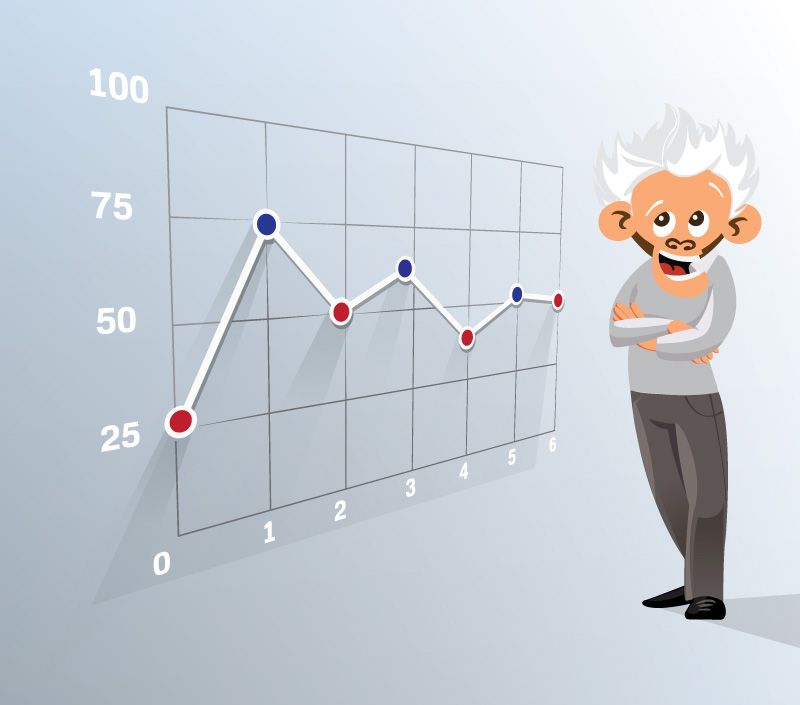
Before a business owner can raise startup funds and finance the launching of a company, they must first research and gather adequate demographic information to include in the business plan. This demography can include things like age, income, race, geographic area, gender and level of education. In addition, it may include marital status, the size of the family, shopping habits and other behavioral attributes. There may be a need to find out local demographic information, such as how many people in a particular area own their own cars, or go to college, or the number of homeowners that reside there, and how many of them are internet subscribers.
Whether the demographics are inclusive of national or local markets, or whether they include large masses or smaller groups (like particular ages), the information learned is helpful in order to avoid the old hit-and-miss marketing methods. This new style of programmatic marketing, which is the forte of Genius Monkey, has rendered the old advertising ways as antiquated and much less effective.

The days of “an ad is an ad, is an ad” have come to a screeching halt with the progression of the programmatic advertising platform. But to take things a step further, there may be differences in how you market your product to different age groups, using different ads that appeal to that particular group. Tastes, preferences and means of viewing may vary across different generations.
The baby boomers were raised on a different media path than today’s millennials are on. For instance, advertisers that are only focused on the traditional 25-54 age group are missing the younger folks and the aging baby boomers, which comprises about 58% of the nation’s population, or in other words, 180 million people! This overlooks opportunities for growth, as baby boomers begin to get older and the “under 25 crowd” is becoming increasingly influential over household spending.
The over-55 group is very relevant in the marketing world, as their numbers are growing and their purchasing ability is strong. It is a mistaken assumption that these people don’t spend as much at that age, and that they are set in their ways. The fact of the matter is that the spending of this age group is comes very close to the purchases of the 25-54 group!
In this age of so many choices of media, business owners and marketers must determine what types of ads will appeal to the age groups that they have targeted; compelling them to sit back and watch, rather than bounce. But should the ads be different for different age groups?

A major beauty makeup company used their newest breakout products to conduct a series of experiments in video advertising, and gleaned some intriguing results. Using a “skippable” ad format, they placed three types of creative content onto YouTube. They measured how three age groups responded to each ad in two important ways:
- What people chose to watch (how long they watched, and if they clicked to see more)
- How the ad impacted the brand (using advanced tracking technology)
One of the ads was a standard half-minute commercial. It featured a celebrity makeup artist who provided a distinct connection between the product and the model runway.
On the scale of low to high, the makeup product was high-end, and the commercial included appealing shots of the makeup and the pretty, well-dressed models. In addition, the voiceover artist had a compelling voice, the production was high-quality and the editing was top-notch. The line of thinking was that this would be a winning combination for the older test crowd, which would be more attuned to a commercial like this anyway.
The next experimental ad was a makeup tutorial video in which a popular blogger demonstrated the proper method of applying the makeup for the daytime, and then how to easily transform it to makeup for going out at night. The video (at 2:54) was much longer than the 30 second spot. There was no voiceover to explain what was happening, it was all visual demo and onscreen graphics to get the two-look process across to the viewers.
The third ad incorporated another how-to video, but instead of a famous model, they used a regular, everyday person with a relatable personality. She was simple and straight forward in her easy-to-follow DIY demonstration of just how to create one single look with the makeup. The substance was similar to the first video, only it was a completely different style, and the production quality was not as high. The thinking with this method is that models that are “relatable” to consumers are trending now. The simplicity look that this video promotes yielded over 3 million results on YouTube. This video fits in well with the trending preferences, and the millennials should appreciate the reality of the video, accepting a lower quality of production.

These ads were all presented to test groups in three age categories: 18-24, 25-34 and 35-44. Here are the findings that reveal which of the ads people chose to view, and which had the most impact across the age groups:
Across the board, consumers of all ages watched the highly produced, “eye candy” ad more than the other videos. It was structured in the traditional fashion and proved to be the most “unskippable.” More people watched the video for at least 30 seconds than they did either of the other two, making it the video with the strongest VTR (View Through Rate). As a matter of fact, this viewing was 82% greater than the video that used an everyday person to display the makeup tutorial, regardless of age.
This is a good indicator that, while a change has certainly come over the traditional brand advertising, there is still room for a good story. The art of well-crafted, well-framed and well-shot video still packs a great marketing punch.
The numbers of views for all the videos were similar amongst the three videos that were tested. However, the similarity ends when it comes to brand impact. The most effective video for the younger viewers was the more direct, intimate ad that used an everyday person explaining what she was doing. It gained the highest click-through rate and produced the greatest number of overall clicks (more than double that of the high production video). It lifted ad recall and brand awareness higher than the other two ads did amongst the younger crowd. The older crowd drove up brand awareness for the first video (the one with higher production quality), lifting brand favorability five times higher than it did for the younger crowd.
This type of testing opens up new marketing opportunities for brands that are looking to appeal to the younger crowd. It’s possible that what really resonated with the younger folks was the sensation that perhaps they were taking advice from a friend or a peer. The takeaway from this is that those brands that want to connect with the younger crowd may want to consider a more laid back, more casual style that features someone who is a straight-to-camera, relatable personality.
So with this type of testing, it becomes evident that consumers are willing and able to answer the call to action from a video. This was never an option in the days of television-only video advertising. If as a marketer, you’re looking to lift click-through rates, it may behoove you to closely consider a straight forward, straight-to-camera style of a video.



